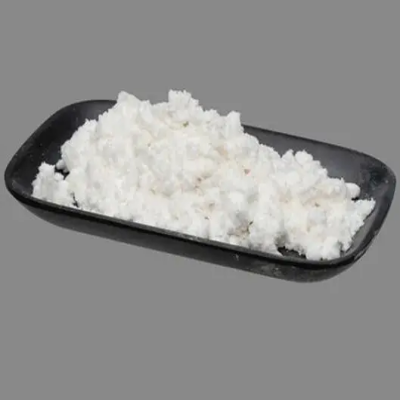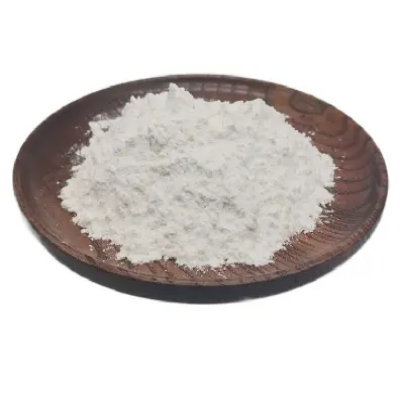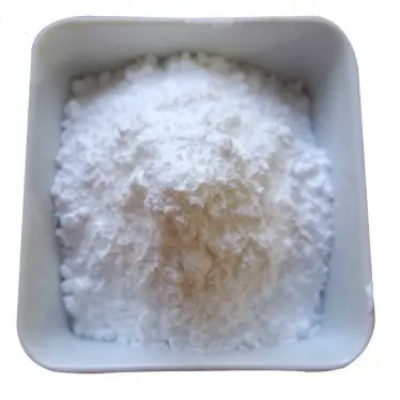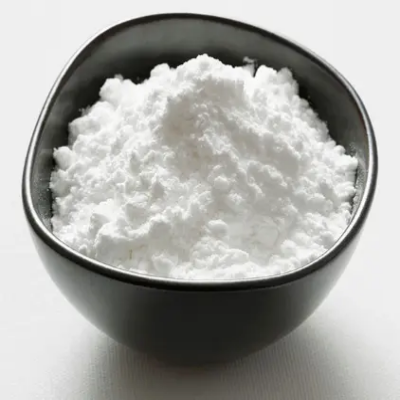-

Telithromycin CAS:191114-48-4
Telithromycin is a ketolide antibiotic developed as a successor to macrolide antibiotics like erythromycin. It exhibits potent activity against respiratory pathogens, including macrolide-resistant strains of Streptococcus pneumoniae. Telithromycin works by binding to the bacterial 50S ribosomal subunit, inhibiting protein synthesis and exerting bacteriostatic effects against susceptible bacteria.
-

Sulfathiazole (4-amino-N-(2-thiazolyl)benzenesulfonamide) CAS:72-14-0
Sulfathiazole is a sulfonamide antibiotic that belongs to the sulfa drug class. It is chemically described as 4-amino-N-(2-thiazolyl)benzenesulfonamide. Sulfathiazole works by inhibiting dihydropteroate synthase, an enzyme crucial for bacterial folic acid synthesis. This mechanism of action disrupts bacterial growth and replication, making it effective against various gram-positive and gram-negative bacteria.
-

Ticarcillin disodium salt CAS:4697-14-7
Ticarcillin disodium salt is a broad-spectrum semi-synthetic penicillin antibiotic used to treat a wide range of bacterial infections. It works by inhibiting bacterial cell wall synthesis, leading to cell lysis and death. Ticarcillin is particularly effective against gram-negative bacteria, including Pseudomonas aeruginosa, as well as some gram-positive organisms.
-

Thiamphenicol CAS:15318-45-3
Thiabendazole is an antiparasitic medication belonging to the benzimidazole class, effective against a variety of parasitic infections. It works by disrupting the microtubule function in the parasites, leading to inhibition of their growth and reproduction. Thiabendazole is commonly used in both veterinary and human medicine for the treatment of parasitic infections caused by nematodes, cestodes, and trematodes.
-

Terbinafine hydrochloride CAS:78628-80-5
Terbinafine hydrochloride is an antifungal medication used to treat fungal infections of the skin, nails, and scalp. It belongs to the allylamine class of antifungal agents, which work by inhibiting the synthesis of ergosterol, an essential component of fungal cell membranes. Terbinafine hydrochloride disrupts fungal cell membrane integrity, leading to fungal cell death and clearance of the infection.
-

Tiamulin fumarate CAS:55297-96-6
Tiamulin fumarate is a semisynthetic pleuromutilin antibiotic used in veterinary medicine to treat swine respiratory diseases and various bacterial infections in poultry. It inhibits bacterial protein synthesis by binding to the 50S ribosomal subunit, exerting bacteriostatic effects against specific gram-positive and mycoplasma organisms. Tiamulin fumarate is well absorbed orally and has good tissue distribution, making it effective for systemic infections in food-producing animals.
-

Thiabendazole CAS:148-79-8
Thiabendazole is an antiparasitic medication belonging to the benzimidazole class, effective against a variety of parasitic infections. It works by disrupting the microtubule function in the parasites, leading to inhibition of their growth and reproduction. Thiabendazole is commonly used in both veterinary and human medicine for the treatment of parasitic infections caused by nematodes, cestodes, and trematodes.
-

Tetracycline CAS:60-54-8
Tetracycline is a broad-spectrum antibiotic belonging to the tetracycline class, derived from the natural compound chlortetracycline. It inhibits bacterial protein synthesis by binding to the bacterial ribosome, thereby preventing the attachment of aminoacyl-tRNA to the mRNA-ribosome complex. This mechanism of action leads to bacteriostatic effects against a wide range of gram-positive and gram-negative bacteria, as well as certain protozoa.
-

Teicoplanin CAS:61036-62-2
Teicoplanin is a glycopeptide antibiotic derived from Actinoplanes teichomyceticus, effective against various gram-positive bacteria including methicillin-resistant Staphylococcus aureus (MRSA). It inhibits bacterial cell wall synthesis by binding to the D-alanyl-D-alanine terminus of peptidoglycan precursors, leading to cell lysis and bactericidal effects. Teicoplanin is often used in clinical settings for treating severe infections caused by gram-positive organisms.
-

Sulfisoxazol (4-amino-N-(3,4-dimethyl-5-isoxazolyl)benzenesulfonamide) CAS:127-69-5
Sulfisoxazole, also known as sulfafurazole, is a sulfonamide antibiotic belonging to the sulfa drug class. Chemically described as 4-amino-N-(3,4-dimethyl-5-isoxazolyl)benzenesulfonamide, sulfisoxazole inhibits bacterial growth by interfering with the synthesis of folic acid. This mechanism of action targets dihydropteroate synthase, an enzyme essential for bacterial folate production, thereby impeding their growth and proliferation.
-

Sulfapyridine CAS:144-83-2
Sulfapyridine is a sulfonamide antibiotic that was historically used in the treatment of bacterial infections, particularly during World War II. It belongs to the class of sulfa drugs, which inhibit bacterial growth by interfering with the synthesis of folic acid. Sulfapyridine exerts its bacteriostatic effects by targeting dihydropteroate synthase, an enzyme essential for folate production in bacteria.
-

Tazobactam CAS:89786-04-9
Tazobactam is a beta-lactamase inhibitor that enhances the activity of beta-lactam antibiotics by protecting them from degradation by beta-lactamase enzymes produced by many resistant bacteria. It is commonly used in combination with beta-lactam antibiotics such as piperacillin to broaden their spectrum of activity against a variety of bacterial infections. Tazobactam effectively restores the efficacy of beta-lactam antibiotics against beta-lactamase-producing bacteria, particularly gram-negative organisms.

